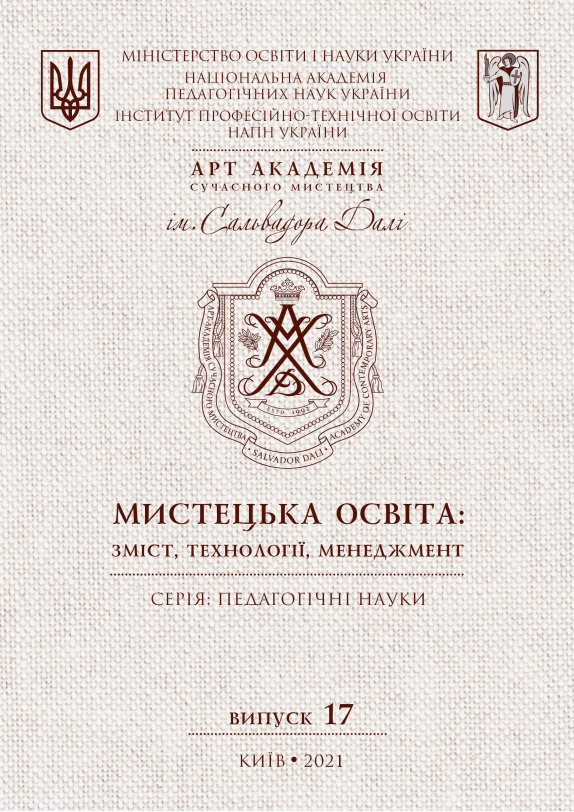WYCHOWANIE PRZEZ SZTUKĘ JAKO KSZTAŁCENIE KULTURY ESTETYCZNEJ CZŁOWIEKA
Abstract
The article highlights the asymmetry in pedagogical (teaching) activities related to art education and education through art. Art education involves the formation of processes of perception, experience and interpretation of the recipient. Deep and penetrating contact with works of art also influences the formation of life behavior and mood of the recipient.
In a narrow sense, aesthetic education - education through art stimulates the creative attitude, emphasizes their own artistic and creative expression, through which the process of personality formation and the need to communicate with art. The purpose of education through art is to promote natural, free, spontaneous creative activity, because it activates the creative attitude - from a potential state, a state of suspension, turns into a state of activity, action, in a state of movement.
Thus, art is a special educational tool. Due to this, the aesthetic culture of a person is formed, aesthetic taste is developed, skills of assessment and understanding of aesthetic phenomena are formed, personality, its moral, intellectual, emotional and social spheres are formed. Art itself inspires a creative attitude, stimulates creative moods, evokes self-expression and imagination.
In this context, there are examples of artistic exercises that promote the education of recipients of discerning, able to experience, understand, interpret and appreciate works of art. Examples of artistic exercises relate to aesthetic education in the narrow sense, ie art education. They implement three of the four components of the open mind: sharpening perception, expanding the range of experience, enriching and deepening knowledge.
References
Баніт, О., & Франц, М. (2020). Методи рефлективної евристики для творчого розв’язання завдань мистецької освіти. Мистецька освіта: зміст, технології, менеджмент, (16), 45-57. https://doi.org/10.37041/2410-4434-2020-16-4.
Gloton, R., Clero C. (1988). Twórcza aktywność dziecka. Warszawa, WSiP. 255 s.
Gołaszewska, M. (1973). Zarys estetyki. Kraków, Wydawnictwo Literackie. 484 s.
Gołaszewska, M. (1989). Kultura estetyczna. Warszawa, WSiP. 99 s.
Olczak, M. (2009). Trening twórczości – współczesna i efektywna forma wychowania przez sztukę. Kraków, Oficyna Wydawnicza „Impuls”. 488 s.
Muszyński, H. (1977). Zarys teorii wychowania. Warszawa, PWN. 422 s.
Szuman, S. (1969). O sztuce i wychowaniu estetycznym. Warszawa, Państwowe Zakłady Wydawnictw Szkolnych. 580 s.
Szuman, S. (1997). Sztuka wzbogaca i pogłębia człowieka. (w:) Teoria wychowania estetycznego. (red.) Irena Wojnar. Warszawa, Wydawnictwo ŻAK. 297 s.
Wojnar, I. (1966). Perspektywy wychowawcze sztuki. Warszawa, NK. 273 s.
Wojnar, I. (1977). Sztuka dla najmłodszych. Teoria – recepcja – oddziaływanie. (red.) Maria Tyszkowa, Warszawa – Poznań, PWN. 352 s.
Wojnar, I. (red.) (1997). Teoria wychowania estetycznego. Warszawa, Wydawnictwo ŻAK. 297 s.
Copyright (c) 2021 Малгожата Франц

This work is licensed under a Creative Commons Attribution-NonCommercial 4.0 International License.

